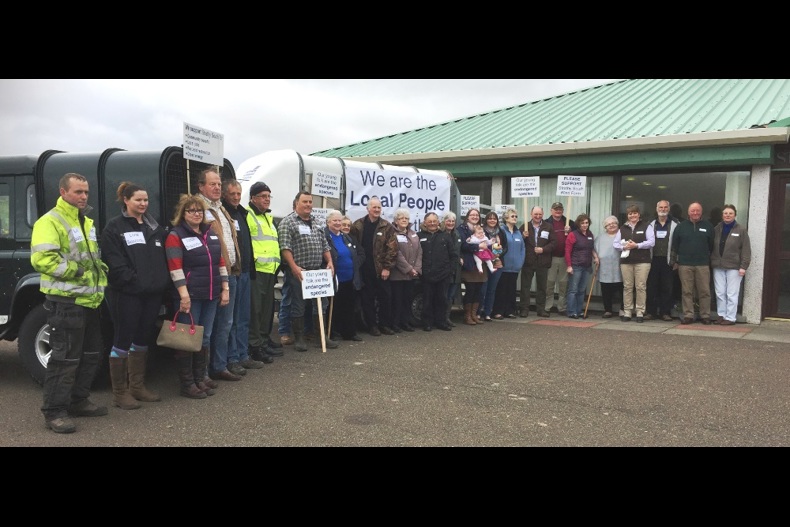Ecology experts praise Strathy South’s environmental benefits ahead of final public inquiry sessions
08 Jun 2015
“SSE’s Strathy South wind farm and peatland restoration proposal guarantees significant net gain for the environment”.
This is the view of prominent Scottish ornithologists giving evidence at the final sessions of the Strathy South public local inquiry (PLI) starting tomorrow (Tuesday) in Strathy Village, Sutherland.
The Strathy South plan includes extensive restoration and conservation management of degraded peatland on the proposed wind farm site and beyond; equivalent to an area the size of around 6,400 full-sized football pitches.
Last year, the Strathy South application triggered a PLI on the basis of concerns maintained by Scottish Natural Heritage (SNH) on two bird species – greenshank and red-throated diver; however experts have judged the approach taken by SNH to assess bird impacts in this case as over-precautionary.
Ornithology specialist at RPS Group, Martin Scott, said:
“The very detailed analysis of the Strathy South site by professional ecologists since 2003 has concluded the approach adopted by SNH is over-precautionary. All other bird and habitat issues have been successfully concluded, except in relation to greenshank and red-throated divers. There is no recorded evidence that these birds are susceptible to collisions with wind turbines, and the benefits of commercial forestry removal and peatland restoration proposed by SSE would be positive for habitats, birds and other wildlife. Our detailed investigations have concluded that no concerning impacts are likely from the Strathy South project, and that overall it is guaranteed to deliver a significant net gain for the environment.”
The comments come as one of the UK’s leading experts on the impact of wind farms on peatland, Dr Tom Dargie, has confirmed the benefits to be gained from restoring forestry-damaged peat back to bog habitat, including renewed capture of atmospheric carbon.
Dr Dargie commented:
“RSPB is a valued conservation charity that does much good work through its reserves, research and in environmental education. We are particularly disappointed therefore that on this occasion, key aspects of the project are being misreported, including the carbon payback figures being put into the public domain. The true likely carbon payback time as shown by the SSE submissions is around 1-2 years. Research shows that in addition to the likely short carbon payback period for the wind farm itself, the large scale peatland restoration proposed will, over time, capture further substantial amounts of atmospheric carbon”.
Paul Cooley, SSE’s Director of Renewables, said:
“SSE is very proud to be the UK’s leading developer of renewable energy. Not only will the Strathy South wind farm create significant environmental gain through the generation of renewable energy, it will also fund the long-term restoration of extensive areas of degraded peatland, with associated carbon benefits. Strathy South also enjoys strong public support from within the local Strathy and Armadale community. If consented, it would join SSE’s existing Strathy North wind farm in contributing millions of pounds to local projects and initiatives in a very rural part of Highland Scotland through community investment plans – while, in tandem, bringing economic benefits to a range of Highland businesses.”

